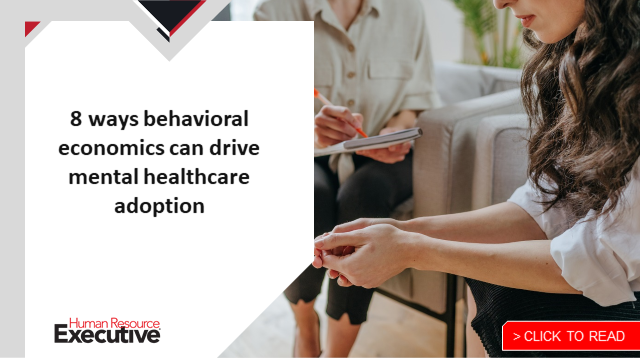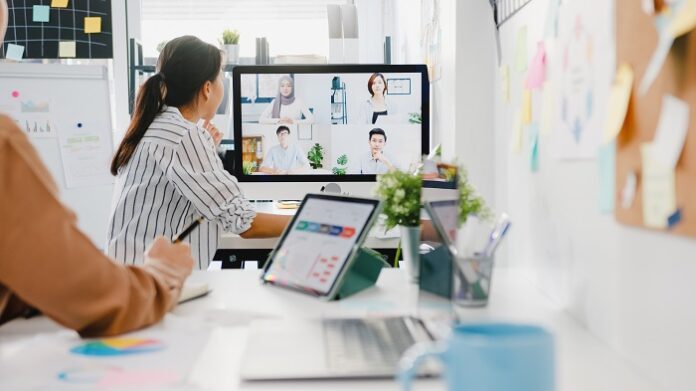A recent commentary in Fortune declared the office obsolete, prompting much discussion and debate. However, it’s Vitality Group’s view that reports of the death of the office have been greatly exaggerated. That said, the workplaces that thrive, enhance employee health and wellbeing, and buzz with energy and creativity—now and in the future—will look nothing like the offices that many deserted in 2020.
We’ve given the future workplace a great deal of consideration in our quest to make people healthier and enhance and protect their lives. Our recently published research in the MIT Sloan Management Review examines the importance of adapting remote work policies to address work/life situations for employees to increase wellbeing and productivity. The study examined the working habits, capacity and wellbeing of 1,000 Vitality employees who transitioned to hybrid working between June 2020 and December 2021. While the analysis found that working from home caused people to feel more productive, a closer look at the data revealed work-life balance deterioration.
Most people spend more hours in low-quality meetings where they are multitasking, double-booked or accompanied by a colleague in a similar role. A trade-off emerged between collaboration hours, which boost employee engagement and offer the ability to hold meetings during certain times, but often increase multitasking and after-hours work—leading to burnout and worsening mental wellbeing.
 Importantly, the study showed that remote working affects employees differently and that employees’ work style preferences vary widely depending on different contexts. By mapping out various employee attributes, this variation can be broadly explained by a person’s age, role and managerial status. We identified 16 work profiles from four levels of employee seniority and four levels of engagement and calculated the impacts of different behaviors on capacity. These were measured by a composite score of employee work and life satisfaction, anxiety and stress levels, work-energy and work/life balance.
Importantly, the study showed that remote working affects employees differently and that employees’ work style preferences vary widely depending on different contexts. By mapping out various employee attributes, this variation can be broadly explained by a person’s age, role and managerial status. We identified 16 work profiles from four levels of employee seniority and four levels of engagement and calculated the impacts of different behaviors on capacity. These were measured by a composite score of employee work and life satisfaction, anxiety and stress levels, work-energy and work/life balance.
We found that focus hours are helpful for senior employees to get tasks done but decrease the workplace wellbeing of junior employees who need collaboration for career growth and as social touch points. The impact of multitasking in low-quality meetings and after-hours collaboration depends on an employee’s level of engagement in their work, which varies widely according to seniority. And increasing workweek span seems to favor more senior employees. Together, these findings and others from the research provide three key considerations.
- The future workplace is undeniably hybrid and needs to be reimagined.
Failure to support physical and mental wellbeing at the individual level has been a catalyst behind the Great Resignation. To support wellbeing, our findings show that employers need to be flexible to accommodate the diverse people in their workplace and create a strong company culture with a shared sense of purpose and belonging.
Employers must consider the makeup of the company and manage the complexity of resulting tensions, such as collaboration and social time dampening productivity but boosting engagement. The workspace needs to be reimagined to accommodate moving to a world where employees can choose the right balance for them. This means adapting physical workspaces and amenities and implementing new tools that enable functional, seamless collaboration between employees in the office and their remote colleagues.
In our organization, we realized quickly that the office we left in 2020 was no longer fit for a healthy hybrid approach. We went back to the drawing board to design a new office to meet the changing and hybrid needs of our employees. This includes removing fixed seating and establishing different collaborative “neighborhoods” and focus areas with a mix of seating types and arrangements to cater for our diverse employees’ needs. We’re also providing technology solutions to keep those at home connected to the office, such as mobile carts with online whiteboards and plug-and-play connections in all meeting spaces. Whether an employee is working remotely from Brazil, calling in from their home office in a Chicago suburb or is in our office, there’s a way for them to connect.
- Collaboration and focus time require careful balancing
Employers must avoid the trap of averages when balancing meetings and focus hours with varying needs and preferences. Whether a role requires intense focus, extensive collaboration or somewhere in between, it’s vital to accommodate each one.
 Employers must consider the type of work people do and their seniority levels. Our Healthy Hybrid workplace survey found a pronounced generational gap in work preferences coming out of the pandemic. Entry-level employees experienced fewer benefits from working remotely than more senior employees. They felt like they had spent less time socializing with family and friends and were isolated and unsupported in their work, while senior employees felt more enabled in their work and personal lives.
Employers must consider the type of work people do and their seniority levels. Our Healthy Hybrid workplace survey found a pronounced generational gap in work preferences coming out of the pandemic. Entry-level employees experienced fewer benefits from working remotely than more senior employees. They felt like they had spent less time socializing with family and friends and were isolated and unsupported in their work, while senior employees felt more enabled in their work and personal lives.
While increasing focus hours may be beneficial to senior employees who may need to concentrate on more complex tasks, it may decrease the wellbeing of junior employees who “want more social interactions and organizational exposure rather than working in isolation of their team.”
- Supporting work/life balance also requires personalization
Our research shows that preferences on workweek span and hours also vary widely. Broadly, more senior employees and those with higher work capacities prefer longer workweek spans. However, the stakes are high. Our research also suggests that increasing the workweek span can seriously impact the wellbeing and work/life balance of more junior employees or employees going through a period where they have lower work capacity. This means that employers need to ensure a personalized approach to managing employee workweek spans.
The way forward
Employers can no longer take a “blanket approach” to workplace rules, such as requiring employees to come into the office under specific conditions. Similarly, the temptation to regiment collaboration or social time for remote workers can be counterproductive, especially for individuals who require more focus time or are negatively impacted by “low-quality” meetings.
 It’s critical that employers meet employees where they’re at for their work style preferences and set clear expectations and communicate changes or new policies related to working arrangements, hours, etc. This is vital to support productivity and physical and mental wellbeing.
It’s critical that employers meet employees where they’re at for their work style preferences and set clear expectations and communicate changes or new policies related to working arrangements, hours, etc. This is vital to support productivity and physical and mental wellbeing.
Telemetry provides a unique new channel to understand and analyze workplace personas and offers a new window to see how people work, collaborate and balance their work and personal lives. These insights can empower employers to create a work environment that works for their employees to be productive regardless of where they work.
Employers must be thoughtful in designing robust workplaces for the future that are inclusive, growth-oriented and rich with flexibility, connectivity and a sense of unity. Companies that succeed in transforming their workplaces will reap the benefits of attracting and retaining talent and enabling long-term, sustainable business performance.



